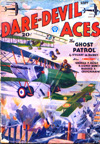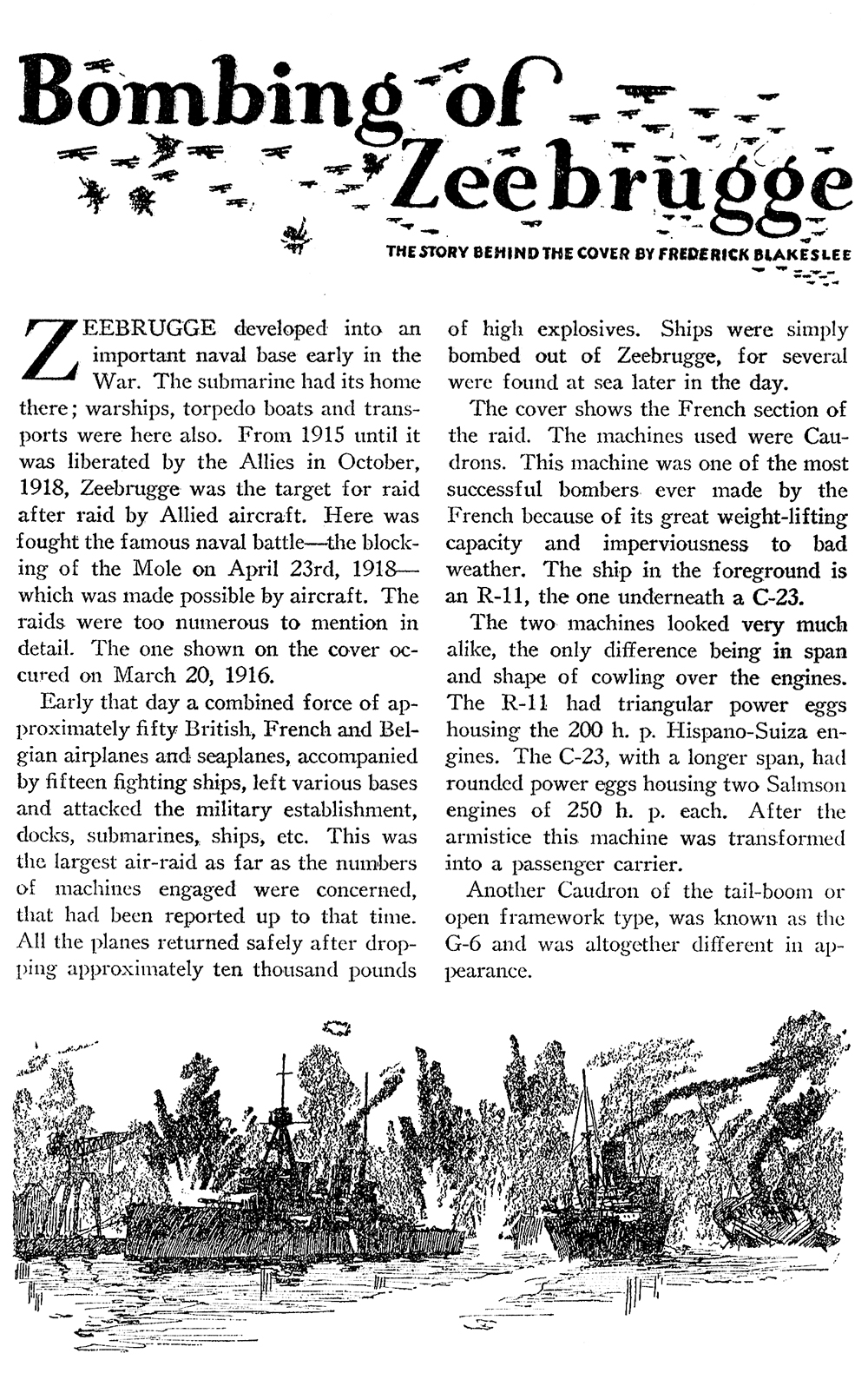Frederick Blakeslee’s “Bombing of Zeebrugge”
Back with another of Frederick Blakeslee’s “The Story Behind The Cover.” This time we’re featuring Blakeslee’s cover for the September 1932 issue of Dare-Devil Aces. It’s a great battle scene depicting a squdron of French Caudron bombers going about thier business. Here’s Frederick Blakeslee himself to tell you about the “Bombing of Zeebrugge,” The Story Behind the Cover…
 ZEEBRUGGE developed into an important naval base early in the War. The submarine had its home there; warships, torpedo boats and transports were here also. From 1915 until it was liberated by the Allies in October, 1918, Zeebrugge was the target for raid after raid by Allied aircraft. Here was fought the famous naval battle—the blocking of the Mole on April 23rd, 1918—which was made possible by aircraft. The raids were too numerous to mention in detail. The one shown on the cover occured on March 20, 1916.
ZEEBRUGGE developed into an important naval base early in the War. The submarine had its home there; warships, torpedo boats and transports were here also. From 1915 until it was liberated by the Allies in October, 1918, Zeebrugge was the target for raid after raid by Allied aircraft. Here was fought the famous naval battle—the blocking of the Mole on April 23rd, 1918—which was made possible by aircraft. The raids were too numerous to mention in detail. The one shown on the cover occured on March 20, 1916.
Early that day a combined force of approximately fifty British, French and Belgian airplanes and seaplanes, accompanied by fifteen fighting ships, left various bases and attacked the military establishment, docks, submarines, ships, etc. This was the largest air-raid as far as the numbers of machines engaged were concerned, that had been reported up to that time. All the planes returned safely after dropping approximately ten thousand pounds of high explosives. Ships were simply bombed out of Zeebrugge, for several were found at sea later in the day.
The cover shows the French section of the raid. The machines used were Caudrons. This machine was one of the most successful bombers ever made by the French because of its great weight-lifting capacity and imperviousness to bad weather. The ship in the foreground is an R-ll, the one underneath a C-23.
The two machines looked very much alike, the only difference being in span and shape of cowling over the engines. The R-ll had triangular power eggs housing the 200 h.p. Hispano-Suiza engines. The C-23, with a longer span, had rounded power eggs housing two Salmson engines of 250 h.p. each. After the armistice this machine was transformed into a passenger carrier.
Another Caudron of the tail-boom or open framework type, was known as the G-6 and was altogether different in appearance.

“Bombing of Zeebrugge: The Story Behind The Cover” by Frederick Blakeslee (September 1932)
Check back again. We will be presenting more of Blakeslee’s Stories behind his cover illustrations.




